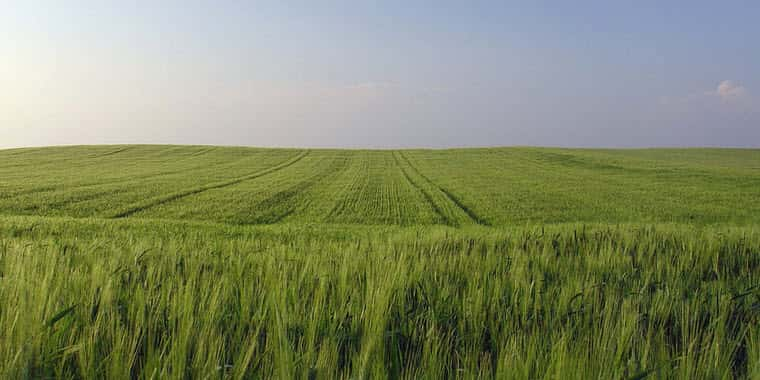by Casey Chumrau, Market Analyst, U.S. Wheat Associates
Spring came early in most parts of the U.S. hard red winter (HRW) wheat belt this year and revealed a crop that looks promising overall — but one that needs a good boost of moisture.
Following a mild winter with limited protection from snow, the first concern about the crop is winterkill. There are signs of damage here and there but it is too early to speculate about its ultimate effect on yields. A bigger variable at this point is soil moisture. Current drought conditions are less severe compared to last year at this time, but moisture is still a serious concern, especially with unusually warm weather so far in March.
When U.S. Wheat Associates (USW) asked representatives from the major HRW states for crop condition updates, they said the next two weeks would be critical to plant development. Like the farmers they work for, all remain optimistic that the forecasted rain will greatly benefit the emerging and greening wheat. Here is a summary of HRW conditions as of March 25.
Montana also had a relatively warm winter and early spring, but soil moisture is still adequate in most of the state. In fact, Montana is the only HRW producing state in which the U.S. government does not report any drought conditions. Collin Watters, executive vice president of the Montana Wheat and Barley Committee, said the risk of a serious frost is dwindling. Although it was mostly light, wind and freeze damage is greater than last year due to limited snow. That is probably the reason USDA rated Montana’s winter wheat crop as 44 percent good or excellent on March 2, which is down 53 percent from last year. A rating of 22 percent poor or very poor on March 2 compares to 9 percent last year. Watters is optimistic that favorable weather in the next few weeks will help the crop overcome any winter damage.
Oklahoma received beneficial rain in most parts of the state last week that is helping overcome some freeze damage in early March. According to Mike Schulte, executive director of the Oklahoma Wheat Commission, most of the crop looks surprisingly good throughout the state. USDA agreed and increased its most recent rating to 44 percent good to excellent from 40 percent the prior week. Topsoil and subsoil moisture in all regions of the state are still lacking and the U.S. Drought Monitor rates conditions in the western half of the state as extreme to exceptional. Warm temperatures this early in the season increase the urgency for more rain that is in the forecast for next week.
Kansas winter wheat, including hard white, recently received a bit of moisture but needs a lot more in the coming weeks. Drought conditions exacerbate the higher than average winterkill Kansas experienced this year according to Kansas Wheat Commission CEO Justin Gilpin. Some winter wheat entered dormancy in less than ideal condition due to extreme temperature changes in November. The very warm weather now in early spring just increases the need for more rain. Still, USDA rates 41 percent of the Kansas winter crop as good or excellent, unchanged from the prior week.
Washington’s winter wheat crop, including HRW and soft white (SW), is coming out of dormancy two to three weeks earlier than normal. Glen Squires, CEO of the Washington Grain Commission, said there were areas of winter kill throughout the state, hitting HRW and club wheat hardest. Some reseeding is already occurring in the heavily damaged fields. While the wheat that survived looked good coming out of winter, the soil needs more moisture. Some recent rains have helped, but Squires is concerned that production will suffer without adequate rainfall in the next three months.
Source: U.S. Wheat Associates


![Campo de trigo – Wheat field [Explored] by ॠGapito à¥, on Flickr Campo de trigo – Wheat field [Explored] by ॠGapito à¥, on Flickr](https://farm4.static.flickr.com/3597/3293330883_7fd4ea66f5_t.jpg)

